MELIK OHANIAN | Stutttering
Galerie Chantal Crousel, Paris
December 12th, 2014 - February 6th, 2015
Melik Ohanian, Stutttering,Exhibition view
“Every situation is
saturated with memory as well as perspective. Being aware of
this delicate balance gives us authority over the
present.” 1
The Galerie Chantal
Crousel is pleased to host Melik Ohanian’s
fourth personal exhibition.
The starting point of
the exhibition is an exibition. Stutttering
(Stut/t/te/ring, spelled with three T) extends a previous
exhibition titled Stuttering (spelled with two T) featured at
the CRAC in Sète, last July. Whether it be in the previous
title, You are mY destinY (2003), or in the series
Word(s) (2006-2014), Melik Ohanian revises the rules
of typography, sharpening the ambiguity of words and
expressions. Here, the notion of echo (and reverberation) that
spring from repeating a single syllable characterizes the
interplay among his displayed works. Almost thirty works are
presented at Galerie Chantal Crousel and at La Douane to
demonstrate the quasi syntactic way the artist works, the
various perceptions, the coexistences of different dimensions
(scientific, political, social, historical) that have always
undergirded his approach and that reflect, in a more
collective sense, our own rapport with the contemporary,
global and dematerialized world, as well as our
imaginary.
Stuttering is
also the title of a series of photographs presented on plasma
screen at La Douane. Melik Ohanian took two shots of a same
subject (various varieties at the Palermo botanical garden),
always the same framing, but with two different focal points.
Both photos are then rhythmically animated in a loop, imbuing
the image with a sort of inner life. This series of works is
at the intersection of a proto-cinema or the futur of
photography.
The phenomenon of
dematerialization is pivotal to the exhibition. Pulp
Off synthesizes a century of work dedicated to memory. It
sets the diary of Vahram Altounian, who witnessed the
1915-1919 Armenian genocide, and the analytical work of his
daughter, Janine Altounian, published in 2009 ; the programmed
pulping of the book, and the recent digital scan of the book
suggested by the artist to perpetuate this memory
today.
La Douane is presenting
a fourth occurrence of the installation: the remains of the
book covers ripped by the artist, suspended between two
temporal strata of a virtual hourglass. It’s a moment between
the ante- and the post-. In contrast, the Modelling
Poetry installation is the algorithmic result of a
possible meeting of two galaxies, a reality as elusive in its
sheer scale as in its fictional quality. The generated
algorithm springs from an astronomical probability that is
rooted in a continuity of movements measured in billions of
years. While Pulp Off examines a continuum in
history, Modelling Poetry digs into a dizzying past
and kicks off a countdown of four billion years.
Melik Ohanian, Stutttering,Exhibition view
A similar appreciation
of time is evident in the work Shell, seven
sculptures in concrete. The cowry shells’ ambiguity, imagined
as a first trading currency or as a tribe’s divine ritual
objects, is augmented by their neutral gray hue and their
modifed size. We could also figure them as archaeology finds
representing another age. Also visible in the same room at
Galerie Chantal Crousel, Transvariation, a luminous
wall animation. A star-studded wall with pinpoints of varying
intensity light, orchestrated by climate data from 1882-1883
registered at the first international stations in the Arctic.
The two works meld figure a desert landscapes, devoid of
humankind.
The exhibition’s grasp
of time in its multiplicity - neither present nor future nor
past - paves the road for inner journeying. The theme of this
exploration has always been present in the artist’s work, like
a primordial condition of being of the world : Island of an
Island (1998-2002) is an installation inspired by an
expedition near Survey Island, off the coast of Iceland,
Selected Recordings (2002-2014), photos of a
wanderer, deliberately lack any indication of date or place,
Seven Minutes Before (2004), a seven-screen video
installation features cameras shooting the same spot as it is
crossed by protagonists from different continents (an Armenian
kemenche player, a Japanese koto player, etc.). The
presence of Red Memory in the exhibition is a new
revelation. The photographs of Rajak Ohanian, the artist’s
father, unveil to us how travel and cultural identities became
a sensitive substance early in Melik Ohanian’s
youth.
The notion of
displacement is linked to the political dimension of Melik
Ohanian’s work. The geographic zones that attract the artist
all have a particular social context : White Wall
Traveling (1997), on the abandoned docks of Liverpool, or
DAYS, I See what I will See (2011) in migrant
workers’ camps in Sharjah. For Return from Memory, Melik
Ohanian visited a closed mine in Mexico just as the last miner
appeared on the suspension bridge, a blending of a
phantasmagorical vision with a resurgent industrial
era.
On display at La Douane,
the Girls of Chilwell was inspired by a little-known
story of World War I, about a group of women who loaded
munitions in a British factory that blew up in 1918. This
time, the artist has used archival photos, shot on site,
inside the factory, in order to make hyper-realistic white
sculptures of the young women. The photo archives greatly
helped in reproducing a part of their faces, but their bodies,
hidden by the angle of the shot, had to be reconstituted. In
2005, Melik Ohanian launched the Datcha Project in a
house in an Armenian village that was qualified as a "Zone of
Non Production". For each each session, the artist invited
people from a wide range of backgrounds to share a temporality
of the space with no particular goal.
In exploring the Melik
Ohanian’s various creative modes, we realize that the reasons
for desertification (social, geographic, and geological) that
are hallmarks of his work, tie in with another phenomenon,
decantation : sample, wait, observe, extract. Thus, his
Post-Images, for example, are a form of opposition to
the news in the media. The artist only returns to the photos
afterwards and only keeps a portion, a small island, a
territory. The sum of the flux of data that individuals today
ingest positions them in the hub of a complex network that
combines politics, culture, and science. In this, Melik
Ohanian questions the future of our collective memory as well
as that of the individual. Will today’s society always be able
to build emancipated identities, operable communities? Or will
not learning about ourselves in our era wind up being so much
praise for the standardization and the modes of boxed-in
thinking? The exhibition Stutttering, via a travel through
time and memory, brings us to reexamine the need of the
attention.
=-=-=-=
1 Extract from an interview with
Melik Ohanian
contacts:
Galerie Chantal
Crousel
10 rue Charlot
75003, Paris
France
T: +33 1 42 77 38
87
www.crousel.com
La
Douane
11F, rue Léon
Jouhaux
75010 Paris
T. +33 1 42 01 64
97

















































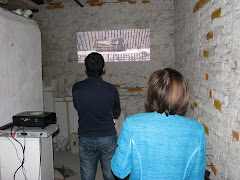














![exi[s]t>15 bulart](https://blogger.googleusercontent.com/img/b/R29vZ2xl/AVvXsEj67mt21mvAFC3VF_3QGzADB-5ZJJLBOlefD6Y8pi5z2e6HTMZztaHCi08vSOJ39mER-PcUmXUyHBnc-dMAq1t6MQe8reeNnIkyGKauFhd88y3NSvcsTLRlB1EdJQrefHryZQxK6-eDTvM/s240/buffet.jpg)
![exi[s]t>15 bulart](https://blogger.googleusercontent.com/img/b/R29vZ2xl/AVvXsEjuEe0w0gLW9nkOXAPGHqtkn89laZeWaQoLwvH2WVTEinKMw5RfqWwzcAkl1Ep27R6j1aYRF4BkiMX_juuZnGDNHyoHRCd65KHsXMg_Z_a3-tLG4OpCSHOlsj5hsPsh_htA6DEegu-Ubic/s240/P8250003.jpg)
![exi[s]t >15 bulart](https://blogger.googleusercontent.com/img/b/R29vZ2xl/AVvXsEg_O-oTzQ29LIVymZGSJUzpJCQYiu6VEztB6VkUPJmKb2VN5bRGpbURyj3-2M3Zz5JGtRjgwY_tr4qC-K21d5pKAzHZn9gYhbw2Vk7CPxb5unRin_828kpxYnzJbDa2Gkx6U1PFw2q1NDI/s150/P8250077.jpg)





















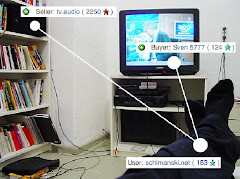














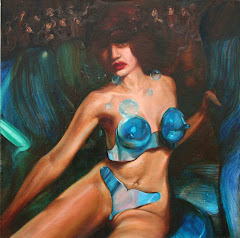
















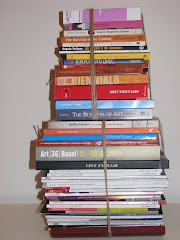




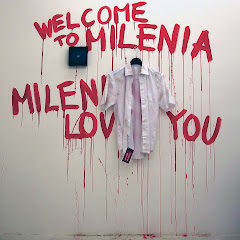

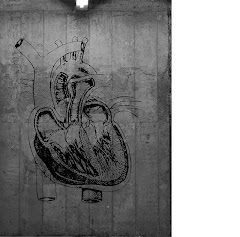







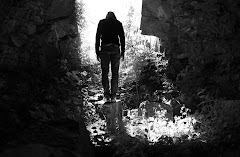



No comments:
Post a Comment